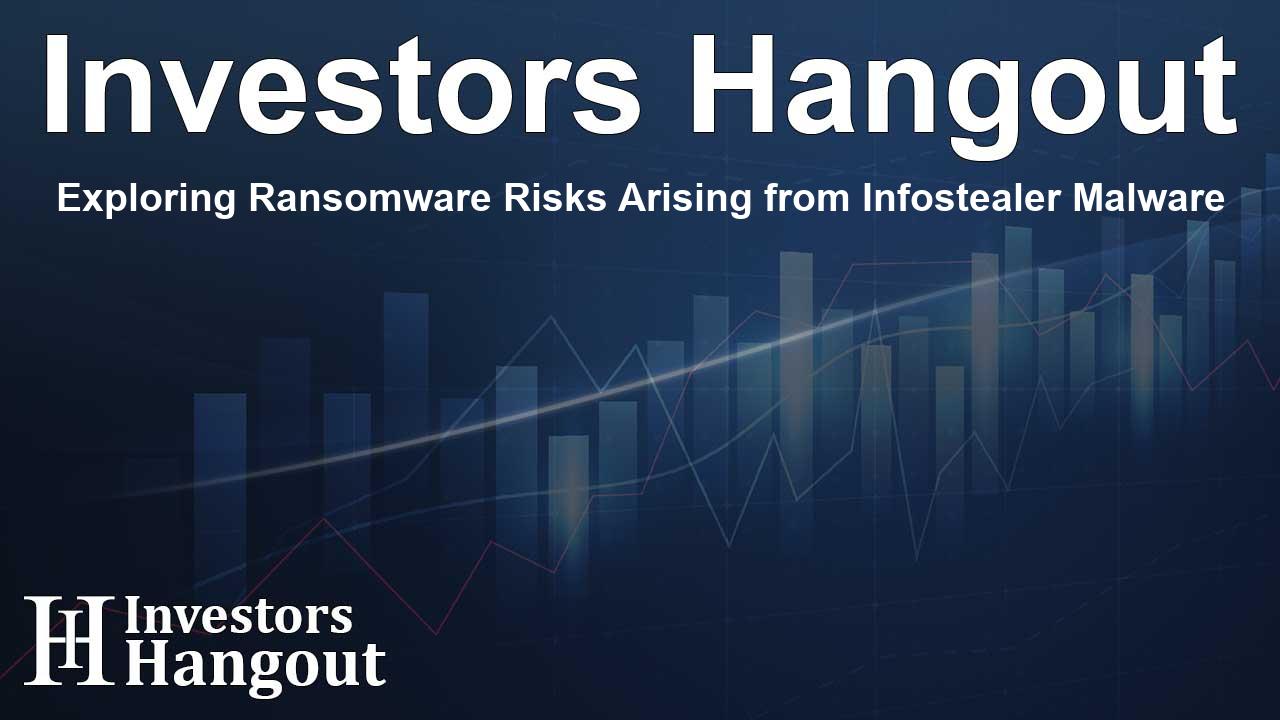Exploring Ransomware Risks Arising from Infostealer Malware

Understanding the Rising Threat of Ransomware
In an era where cybersecurity is paramount, new research sheds light on the increasingly complex landscape of cyber threats. As organizations navigate the challenges posed by infostealer malware, they find themselves at greater risk of ransomware attacks. This trend reflects a significant need for enhanced security measures amid evolving cybercriminal strategies.
Key Findings from Recent Cybersecurity Reports
Recently, an extensive analysis conducted by industry leaders revealed compelling insights into the state of cybersecurity. The report indicates that ransomware is viewed as the greatest threat facing diverse industries today. Notably, a staggering 75% of companies experienced multiple ransomware incidents in the preceding year, highlighting an alarming escalation from previous statistics.
Malware Complications and Rising Incidence Rates
Malware, particularly infostealers, has complicated the cybersecurity landscape. These types of malware are designed to extract sensitive data, such as login credentials and session cookies, from users. Shockingly, the report found that 61% of data breaches in the last year were attributed to malware, primarily infostealers. This statistic reflects a disconcerting trend, with one in five individuals succumbing to infostealer infections.
Challenges in Cybersecurity Preparedness
Despite the growing awareness of these threats, a noted disparity exists between the confidence levels of IT executives and the security practitioners on the front lines. While 91% of CIOs and CISOs express confidence in their ability to mitigate ransomware threats, only 54% of security practitioners share that sentiment. This disconnect underscores the urgent need for improved communication and strategy alignment within organizations.
The Evolving Tactics of Cybercriminals
Supervised by the findings, it becomes evident that cybercriminals are capitalizing on infostealer-exfiltrated data. As traditional defenses falter, ransomware operators exploit this data for their malicious campaigns. It is vital for organizations to adopt an identity-centric approach to combat this trend effectively.
Financial Implications of Ransomware Attacks
The financial costs associated with ransomware attacks are continuously climbing. Over 44% of organizations now report expenditures exceeding $1 million due to ransomware impacts. This includes direct costs from ransom payments, in addition to indirect costs such as loss of productivity and reputational damage. Increasingly, companies are facing the dilemma of whether to pay ransoms, with more than 60% of organizations making such payments over the last year.
Ransom Payments and Recovery Statistics
A concerning statistic shows that although many organizations opt to pay ransoms, only a third fully recover their data. This raises critical questions regarding the efficacy of capitulating to cybercriminal demands and shines a spotlight on the importance of robust preventive measures.
Best Practices for Ransomware Prevention
To fend off ransomware effectively, organizations must consider a multi-layered security strategy. Key actions include investigating malware incidents, resetting credentials, and conducting thorough log reviews to determine exposure and remediation steps. This proactive stance is necessary to safeguard sensitive data before it falls into the wrong hands.
Engaging in Post-Infection Remediation
Organizations are increasingly adopting post-infection remediation measures, which include resetting application credentials and invalidating compromised session cookies. As noted by experts, addressing these vulnerabilities quickly can significantly curtail the impact of cyberattacks, implementing preventive practices that smoothly integrate into existing security protocols.
The Role of Cybersecurity Awareness Training
Cybersecurity awareness training is another crucial component in combating the threat of infostealer malware and ransomware. Regularly educating employees about phishing attacks and safe online practices fosters a security-minded culture, reducing the likelihood of falling victim to such threats.
Frequently Asked Questions
What is infostealer malware?
Infostealer malware is designed to extract sensitive information like usernames, passwords, and session cookies from users, facilitating further attacks such as ransomware.
How prevalent are ransomware attacks?
Ransomware attacks are incredibly common, with recent reports indicating over 90% of organizations have experienced some form of ransomware incident within the past year.
What are effective strategies to prevent ransomware?
Effective strategies include deploying multi-layered security measures, conducting regular employee training, and promptly addressing any malware infections that arise.
How does infostealer malware affect businesses?
Infostealer malware increases the risk of unauthorized access to sensitive business data, posing a threat to both security and financial stability.
What should be done after a ransomware payment?
After a ransomware payment, organizations should remain vigilant, conduct thorough investigations of the incident, implement preventive measures, and update all compromised credentials.
About Investors Hangout
Investors Hangout is a leading online stock forum for financial discussion and learning, offering a wide range of free tools and resources. It draws in traders of all levels, who exchange market knowledge, investigate trading tactics, and keep an eye on industry developments in real time. Featuring financial articles, stock message boards, quotes, charts, company profiles, and live news updates. Through cooperative learning and a wealth of informational resources, it helps users from novices creating their first portfolios to experts honing their techniques. Join Investors Hangout today: https://investorshangout.com/
Disclaimer: The content of this article is solely for general informational purposes only; it does not represent legal, financial, or investment advice. Investors Hangout does not offer financial advice; the author is not a licensed financial advisor. Consult a qualified advisor before making any financial or investment decisions based on this article. The author's interpretation of publicly available data shapes the opinions presented here; as a result, they should not be taken as advice to purchase, sell, or hold any securities mentioned or any other investments. The author does not guarantee the accuracy, completeness, or timeliness of any material, providing it "as is." Information and market conditions may change; past performance is not indicative of future outcomes. If any of the material offered here is inaccurate, please contact us for corrections.